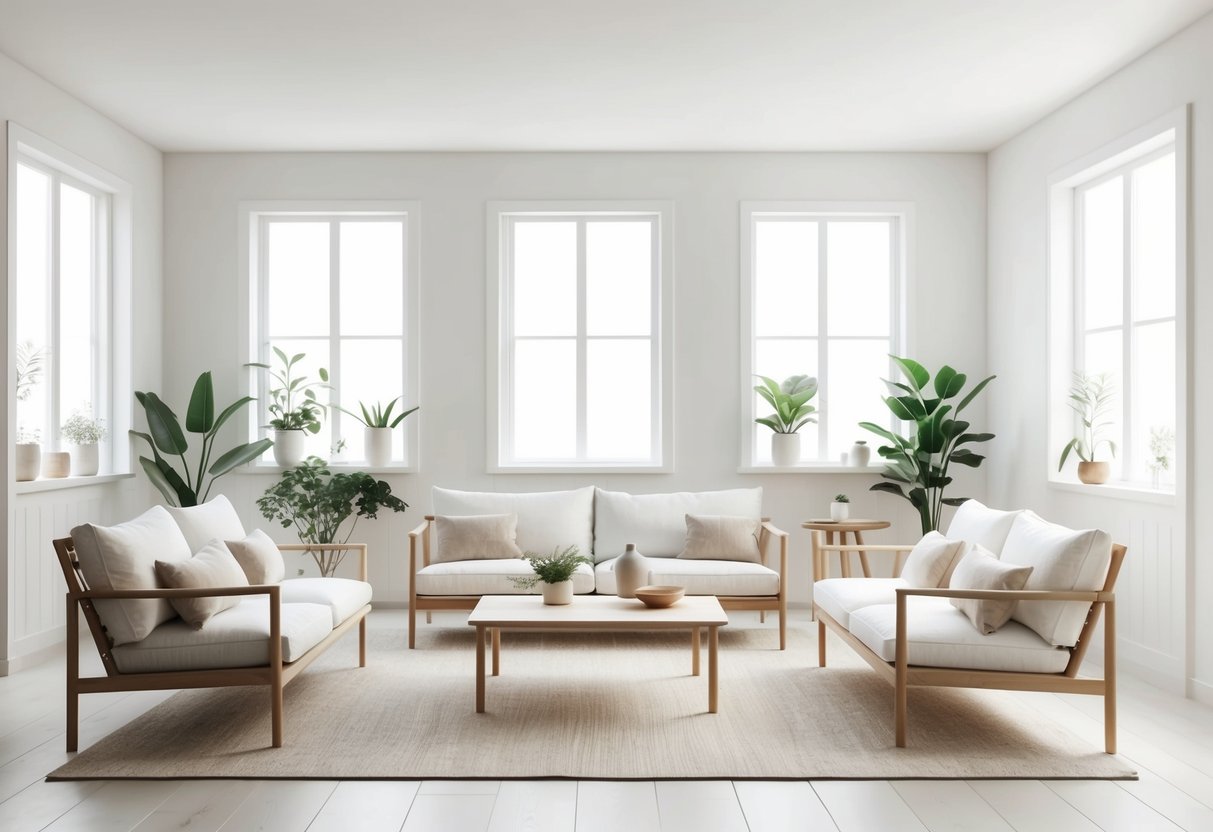
Scandinavian interior design is known for its calm, inviting atmosphere and strong focus on comfort, functionality, and minimalism. Drawing inspiration from the Nordic way of life, every space can benefit from the natural light, neutral colors, and carefully chosen furnishings that define this style.
This approach isn’t just for living rooms and bedrooms. Scandinavian style can be adapted seamlessly for kitchens, bathrooms, entryways, and even workspaces.
Thoughtful details like natural textiles, large area rugs, and plenty of open space help bring the signature Scandi warmth and function into every corner of the house, as highlighted by guides on Scandinavian interior design.
Understanding the Foundations of Scandinavian Interior Design
Scandinavian interior design is shaped by a distinct set of principles rooted in simplicity, practicality, and harmony with nature. Clean lines, natural materials, and a restrained palette are at the heart of this interior design style, setting it apart from other design philosophies.
Core Principles and Philosophy
At its essence, Scandinavian design is based on the idea that interiors should be both beautiful and livable. Spaces are arranged to foster a sense of calm and balance through uncluttered layouts and intentional choices.
Form always follows function, ensuring every element serves a real purpose. Light is essential, with Scandinavian style emphasizing large windows, sheer curtains, and pale surfaces to maximize brightness.
Neutral colors like white, gray, and beige dominate, often contrasted with natural wood and subtle accents for warmth. The guiding philosophy values quality over quantity, with a focus on durable craftsmanship and sustainable materials.
This approach embraces nature, inviting organic elements indoors and supporting an atmosphere that feels both airy and inviting.
Minimalism and Functionality
Minimalist design is fundamental to Scandinavian interiors. Every object is selected for its utility as well as its aesthetic contribution, eliminating visual noise and maintaining spaces that feel open and uncluttered.
Storage solutions are cleverly integrated, allowing for a tidy environment without sacrificing style. Functionality takes precedence—furniture often features multifunctional designs such as expandable tables, modular sofas, or built-in shelving.
The color palette remains understated, supporting easy maintenance and flexibility. The minimal and clean designs are central to how Scandinavian style is recognized.
Influence of Nordic Countries
The roots of Scandinavian interior design are strongly tied to the climate and cultural ethos of Nordic countries, including Sweden, Denmark, Norway, and Finland. Harsh winters and limited daylight hours influenced the emphasis on light, warmth, and coziness, with interiors designed to be inviting despite external conditions.
Materials like wool, sheepskin, and light woods such as birch and pine are used to add comfort and a connection to nature. Nordic countries value a sense of hygge, a Danish and Norwegian term describing coziness and well-being.
This ethos shapes the Scandinavian style’s focus on soft textures, gentle lighting, and social spaces. Practicality and sustainability are also key, reflecting Scandinavian countries’ commitment to ecological responsibility and long-lasting products—a hallmark of authentic Scandinavian interior design.
Selecting the Ideal Color Palette
Choosing the right color palette is essential in Scandinavian interior design. A careful mix of neutral colors, muted tones, and purposeful pops of color gives the home a cohesive and inviting atmosphere while remaining true to Scandinavian style.
Neutral Colors and Muted Tones
Scandinavian design emphasizes a neutral color palette that forms a calming foundation for any room. Common choices include soft whites, warm greys, subtle taupes, and light beiges.
These shades reflect light and amplify the sense of space, especially important in homes with limited natural daylight. Incorporating muted colors, such as gentle pastels or earthy undertones like sage green and dusty blue, can further enhance the peaceful mood of the space.
Painting walls in soft off-white or cream tones keeps the look clean and bright, as recommended by designers and highlighted in Scandinavian interior design guides. Using natural materials in furniture and textiles, like light wood or linen, deepens the palette with subtle variation.
A table showing typical Scandinavian base colors:
| Color | Use | Effect |
|---|---|---|
| Soft white | Walls, ceilings | Light, open feel |
| Light grey | Sofas, floors, rugs | Calm, modern look |
| Taupe | Cabinets, textiles | Warmth, balance |
| Sage green | Accent walls, decor | Fresh, tranquil touch |
Pops of Colour for Accent
While the focus is often on neutrals, well-chosen pops of colour keep the interior from feeling monotonous. Accents might include a forest green cushion, a cobalt blue vase, or deep grey throws.
These touches bring depth and personality to each room without overwhelming the core palette. Adding color through accessories, artwork, and small pieces allows for easy updates and customization.
Forest green, blue, and deeper grey tones are commonly used to layer interest, as detailed in Scandinavian palette guides. Decor items can be rotated seasonally, letting spaces stay fresh and engaging year-round.
Use this list for accent ideas:
- Throw pillows in navy or mustard
- Ceramic vases in blush or muted green
- Patterned rugs featuring subtle blue or terracotta
Consistency Across Spaces
Maintaining consistency in the color palette is key for an authentic Scandinavian interior. Using similar neutral colors and soft hues throughout the home ensures a seamless flow from one room to the next.
Flooring, walls, and even cabinetry most often follow the same muted scheme. Subtle variations are acceptable, but abrupt changes should be avoided.
A harmonious palette creates visual unity and reinforces the calm, uncluttered feeling associated with this design style. Open-plan spaces especially benefit from a unified approach, so light woods, whites, and carefully selected accents tie together living, dining, and kitchen areas effortlessly, as emphasized in Scandinavian design advice.
Coordinating the color palette helps small homes feel larger and more cohesive. Repeating materials and tones in practical ways, such as matching wood finishes or wall colors, is both practical and stylish.